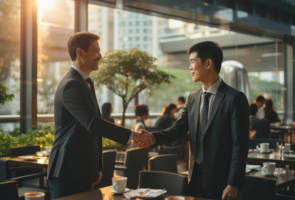Handling Medical Emergencies in Japan
Monday, February 25, 2019
Where to call, what to expect and how to handle medical emergencies as a foreigner in Japan.

The healthcare system in Japan is based on the values of socialized medicine. Under this system, both citizens and temporary residents of Japan pay 30% of all their medical bills, including dental, out of pocket, and the remaining 70% is covered by national health insurance. In addition to national health insurance, establishments that employ 700 or more employees on a continuous basis or that include 3,000 or more employees in the same type of business or industry are eligible to establish their own health insurance societies called kenpo. Health insurance payments to the national scheme and these insurance societies are deducted from monthly salaries automatically. For example, as a scientific researcher, The Science and Technology Health Insurance Society, handles insurance benefits and claims so that the employees can make claims directly through their workplace (instead of at their local ward office), whether for long-term illnesses, maternity care or emergencies. Insurance benefits extend to immediate family members including parents who are declared as dependents. The Japanese well known for their incredibly high life expectancy with a good quality of life for people in their twilight years. While there is plenty to know about gaining access to healthcare while in Japan, this article will focusses on handling accidents and medical emergencies.
Whether you are in a car accident or a hiking mishap, the first number to call in Japan is 119, which reaches the fire, ambulance and emergency rescue departments1. In general, the police (accessed by the number 110) are also immediately notified. Making such a call from the public payphone is free of charge and does not require coins or a prepaid card. Instead, there is a red button - kinkyu tsuho (emergency notification) - on the front of the unit, which needs to be pressed before the required number is dialed in. Once you get through, you will have to report that it’s an emergency, what happened, the location of the incident, your name, and the number you are calling from etc. Sometimes, English-speaking operators are available in more urban areas like Tokyo. Nevertheless, speaking in English to a non-English speaking operator isn’t going to prevent you from getting help, just speak slowly and clearly while stating your location. In Japan, transportation of patients by ambulances and air-rescue ambulances are free of charge in cases of genuine emergency. Paramedics choose the hospital based on the patient’s condition, which might not always be the hospital of your preference, but requests can be made and the paramedics will judge the situation depending on distance, the patient’s condition, and if a specialized doctor is available in that location.

Upon reaching a hospital in an emergency, having a friend or coworker who can translate between English and Japanese is extremely helpful, even though many hospitals these days provide some translation services. Nevertheless, doctors and paramedics do tend to understand medical terms when spoken slowly or with a slight Japanese accent. Standard questions are the same anywhere in the world, for example, known allergies - Arerugī, existing illness - Byōki, and about the level of pain - Itami dou desu ka? (How is your pain?) There is plenty of paperwork to be filled, especially in cases where surgery is required, and having a Japanese translator is very helpful. Fortunately, there is also a medical and security assistance service called the International SOS for managing such situations, to which a registered membership card may be provided by larger Japanese institutions for their foreign staff. The membership card contains an SOS phone number and membership ID which gives access to a concierge service, translator etc. both in Japan and internationally.
It is advised that you keep your insurance card with you at all times, as it is required as soon as you reach a or medical facility. In cases where you do not have your insurance card on you, hospitals require 100 % of the total costs up front, later copies of the insurance card can to be sent and upon receiving the relevant information, the facility will reimburse the 70% as is standard. In some situations some administrative and/or postage fees may be deducted before the money is returned. Even in cases where the bills must be paid in full, the sum tends be reasonable, compared to fees payable in the US for similar incidents, and local hospitals are generally able to make arrangements for payments to be delayed or received in installments. Moreover, monthly medical expenses are capped to a certain amount, according to your monthly salary if you are in an insurance society (e.g. IBM Japan Kenpo) and thus, further reimbursements are provided by your health insurance society at a later date.
After emergency treatment, a patient has the freedom to choose their preferred hospital or doctor to continue treatment in any part of Japan, and the transfer of medical information and documents is relatively seamless. For example, if one were hiking in Mie prefecture and happened to break a bone, first response treatment would take place at the nearby Matsuzaka Hospital. Then, patient can choose to return to Osaka where they live to continue treatment once their condition is stabilized and the emergency doctor deems that he or she is fit to travel.

As with every country, one can expect differences in medical policies and practices. The Zen Buddhist philosophy of Gaman largely shapes the Japanese attitude to pain management, and thus it is known that pain relief medication is largely under-prescribed unless absolutely necessary. There are many anecdotal stories where foreign women giving birth in Japan have had to deal with lesser amounts of pain medication than expected2. This is also true of emergency rooms and thus it is advised that foreign patients be vocal about their pain and discomfort and in asking about pain management options. In general, opioids are prescribed at a far lesser rate Japan than in the US (or most other places in the world), which has also mitigated the opioid-dependence crisis3. Post-surgery, opioids tend to be prescribed sparingly at best.
Even with the language barrier, and differences in medical practices, the quality of healthcare in Japan is very good, and handling the logistics of receiving treatment is largely stress-free. According to the Japan Times in 2017, the health insurance system might be buckling under the pressures of an aging population, where tax-paying population is under the pressure of ever increasing as taxes and premiums to close the gap4. Moreover, there are shortages of medical professionals such as anesthesiologists5 in the country, and growing disparity in the distribution of doctors in the country, resulting in shortages of specialists in rural areas6. The barrier for entry for foreigners as doctors is still high due to serious problems with the language barrier, and strict qualifications from an insular system and endurance testing7 (that is to say, the processing time for applications by foreign doctors can take months, one British doctor waited 15 months before getting permission to work as a doctor in Japan.) The sustainability of this wonderful system is going to be greatly dependent on measures to address these issues by the Japanese government.
But, despite the system’s future problems and the language barriers that all foreigners encouter, the security of a stellar insurance system and the high level of medical expertise does make Japan one of the better places to break your limb while hiking in the wilderness.
1. https://www.tokyo-icc.jp/guide_eng/kinkyu/01.html
3. https://www.ncbi.nlm.nih.gov/pubmed/28379832
4. https://www.japantimes.co.jp/news/2017/02/19/national/japans-buckling-health-care-system-crossroads/
5. http://www.med.or.jp/english/pdf/2007_04/325_329.pdf
6. https://www.ncbi.nlm.nih.gov/pubmed/29317415
7. https://bccjacumen.com/globalising-japans-medical-care/
----------------------------------------------
About the Author

Scientist, with 3 years in Kobe and counting...








